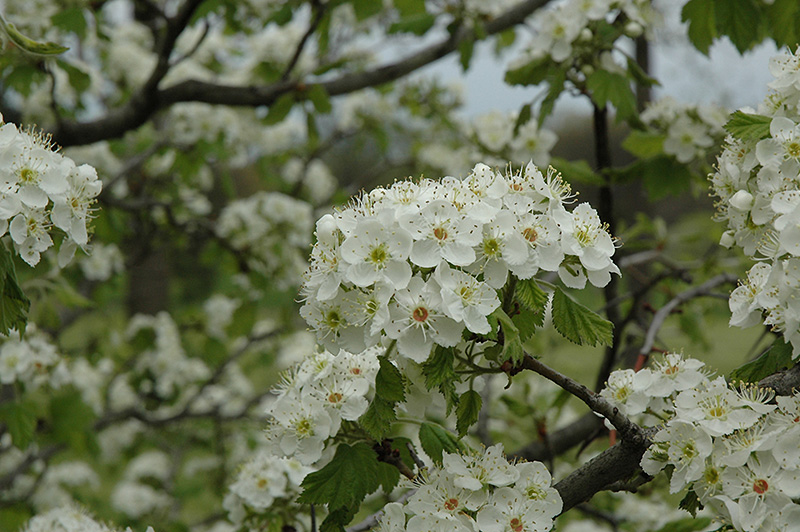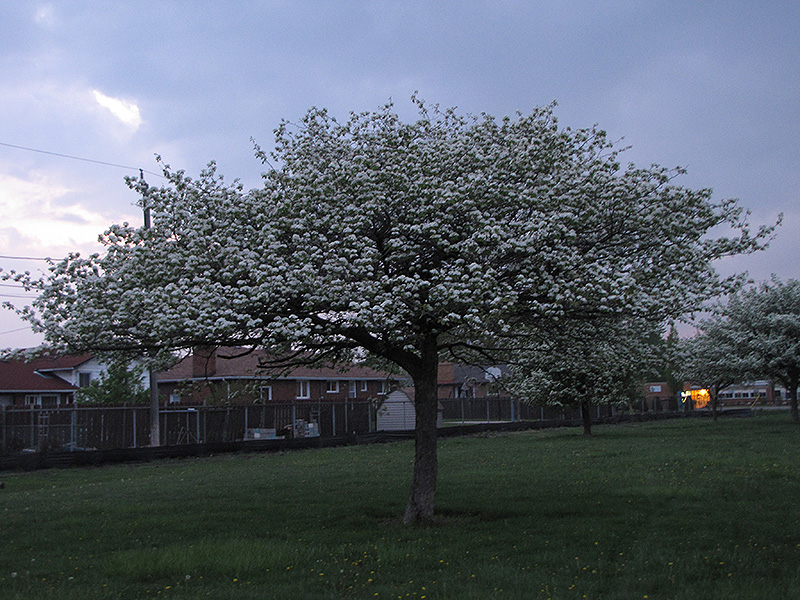Plant Finder
* This is a "special order" plant - contact store for details
Height: 25 feet
Spread: 20 feet
Sunlight:
![]()
Hardiness Zone: 3a
Description:
A attractive small tree with showy fruit and flowers and fuzzy leaves, fruit can sometimes be messy in a lawn; this tough North American native is excellent as a windbreak and in hedgerow plantings
Ornamental Features
Downy Hawthorn is blanketed in stunning clusters of white flowers held atop the branches in late spring. The fruits are showy red pomes carried in abundance from early fall to late winter. The fruit can be messy if allowed to drop on the lawn or walkways, and may require occasional clean-up. It has dark green deciduous foliage. The fuzzy round leaves turn an outstanding yellow in the fall.
Landscape Attributes
Downy Hawthorn is a deciduous tree with a more or less rounded form. Its average texture blends into the landscape, but can be balanced by one or two finer or coarser trees or shrubs for an effective composition.
This is a relatively low maintenance tree, and is best pruned in late winter once the threat of extreme cold has passed. Gardeners should be aware of the following characteristic(s) that may warrant special consideration;
- Disease
- Spiny
Downy Hawthorn is recommended for the following landscape applications;
- Accent
- Hedges/Screening
- Windbreaks and Shelterbelts
- Naturalizing And Woodland Gardens
Planting & Growing
Downy Hawthorn will grow to be about 25 feet tall at maturity, with a spread of 20 feet. It has a low canopy with a typical clearance of 4 feet from the ground, and should not be planted underneath power lines. It grows at a slow rate, and under ideal conditions can be expected to live for 40 years or more.
This tree should only be grown in full sunlight. It prefers dry to average moisture levels with very well-drained soil, and will often die in standing water. It is considered to be drought-tolerant, and thus makes an ideal choice for xeriscaping or the moisture-conserving landscape. It is not particular as to soil type or pH, and is able to handle environmental salt. It is somewhat tolerant of urban pollution. This species is native to parts of North America.
* This is a "special order" plant - contact store for details

